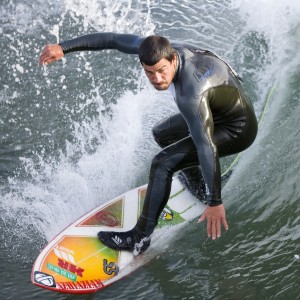Read how #ParshaLive utilizes technology and Torah to connect teens to Judaism. What more can we do to maximize our use of technology in kiruv?
 My First iPad
My First iPad
A few years ago I was part of a “National Technology Team,” charged by NCSY to come up with new ways of using technology to reach Jewish teens in today’s world. Since then, I think there have been twice as many communicative inventions than there were between that time and when I was a kid. I’m not sure if we came up with any ideas or conclusions in that group, but I have definitely had “technology and education” in the back of my mind since then.
I remember when I got my first iPad and immediately Googled “how to teach on an iPad”. I was SO excited for all the new lives I was going to change because of all the new technological capabilities I was surely going to have! That year at StaffCon me and a few others who had iPads used them to vigorously take notes and share ideas about which Apps were going to inspire the Jewish future.
Today, I don’t use my iPad as often as I once did, but I can’t tell you that it didn’t help me reach teens. It sometimes created a relatability that some of us have to strategize more than others. It has been at times an exciting way to show teens videos and brain maps about Torah concepts that have helped conversations. It has been anything but useless! But in 2016, it’s not what it was in 2011.
 Catching the Waves
Catching the Waves
I have found that using technology (in education) is like surfing.1 It looks REALLY cool and REALLY fun… but most of the time is spent waiting to catch the right wave. Some waves look awesome, but they die out before they reach the shore. Others come up slowly, but increase their strength and turn out to be massive.
Some technologies look like they’re going to change the way we reach teens or the way we work with each other. Some technologies look foolish, until we feel silly for not investing our time in them earlier. But the one thing that I think all waves have in common is that they start, and they end, and you can only really get something out of it if you ride it at the ride time.
Early in my Facebook career somewhere around 6-8 years ago, Facebook Events used to be an honest indicator of event attendance. If I created a “Latte and Learning Tonight!” Event, and 17 people clicked that they were “going”, then we knew we’d get 15-20 kids there, and 90% of the kids who clicked that they would actually go.
Today, a Facebook Event is a poor barometer. It might tell us a general idea of how it’s viewed by our audience, but it’s really just part of the marketing we have to do and not a considerable amount more than that.
A few years ago, Facebook changed the birthday feature that made it extremely convenient to see a drop down list of who has a birthday today. For a time I cannot measure, I try to make it a point every single day and write “Happy Birthday” on the wall of every teen I know who has a birthday.
 6-8 months ago, what I was doing was enough to stand out and gain appreciation from our teens. But today, it’s beginning to get dwarfed by huge photo collages and long notes about “how great my friend is”. I still think this practice is worthwhile, and when the long notes and collages die out, I’ll still be typing “Happy Birthday”, but things changed quickly.
6-8 months ago, what I was doing was enough to stand out and gain appreciation from our teens. But today, it’s beginning to get dwarfed by huge photo collages and long notes about “how great my friend is”. I still think this practice is worthwhile, and when the long notes and collages die out, I’ll still be typing “Happy Birthday”, but things changed quickly.
The Latest Wave: #ParshaLIVE
So onto my latest technology excitement: Facebook Live.
I discovered it only perhaps a month or more ago, when I noticed a few of the more innovative companies and organizations were releasing live streams of random stuff they had going on. Then I noticed a random couple of friends had made live streams of random things in their life… and I noticed that I wanted to watch - just because it was new.
My wife and I experimented on our drive to her sister in Detroit a few weeks ago, Facebook Living our very boring drive on I-80 West. The kids needed snacks, I was talking about the Sixers upcoming Lottery Pick… and we somehow got nearly 400 views!2
I was intrigued, and following the “Good to Great”3 model, I decided to crawl a little bit before I walked and make a Parsha video the next day, erev Shabbos. I figured that a lot of the appeal was my kids running around and all my non-NCSY friends wanting to check in on us, so we made sure to have our kids distract that Dvar Torah plenty - it honestly was my Dvar Torah that created a slight distraction from my kids messing around. We got nearly 300 views.
Next, it was time to walk with the idea. Back in Cleveland, I invited a couple kids over to learn Parsha, which is regular, but I told them we were going to broadcast it live on Facebook, as well. We’re calling it #ParshaLIVE. In our first attempt, with a straight 10-15 minutes of real Torah, we got over 200 views. The next week, we were up to 330 (thanks I’m sure to some TJJ marketing from DL Lavin). We’ve been broadcasting it on Facebook ever so slightly, not pumping it up too much, but just enough to be seen.
Hey, even Tzvi’s mom likes it!

[Addendums on #ParshaLIVE: Are You Sure This is Working?
No. The first few trials I ran had my wife and kids bumping up the numbers, and the most recent one had DL in Israel and a bunch of TJJ kids at midnight in Israel… but it’s definitely not NOT working, and it’s probably better than the older model of just sharing a YouTube video. Time will tell.
We’re definitely not RUNNING with this idea yet. The crawl let us to a walk, and that’s where we are now.
Does Facebook Water Down the Parsha Class?
At first I wasn’t sure if turning a private and personal Parsha class into a public forum would be a good idea. I imagined I would be sacrificing the Torah learning of the original few kids in the group. What if they couldn’t focus? What if they were more concerned about how they look than the Torah they’re hearing?
Well, so far, it seems that there were two things I didn’t consider. Firstly, they have definitely been engaged! Whether it’s because it didn’t change anything, or perhaps even because they want Facebook to capture them actually paying attention… it’s been working! Secondly, in our second week we had a guy drop in half way through the class that has NEVER been there before. “Rabbi, you said you were doing Parsha?” If publicizing it is getting more kids to actually come over and hear it IN PERSON? That’s a win. Thirdly, I have to be on my game!! I know each week more and more people are listening to my Parsha class… I can’t just get by on what I think Rashi said! I have to really look into things, think about it, and make sure it’s relevant.
Next Steps for #ParshaLIVE
A few ideas we have to continue to push the Parsha class concept are to advertise sponsorships for refuah shleima or iluy nishmas, partner with other organizations, or get teens and advisors to take a role in the Divrei Torah. All other ideas are welcome!]
What’s Next?
The Facebook Live thing will die down, like everything does, and probably quicker than we’re used to. But in the meantime, are we trying it to reach new audiences in new ways? Are we trying to make sure we seem “relevant and in touch” to the teens and parents around us? Should we be Facebook Living our Havdallah at Shabbatons or other parts of our events? What about a teen Dvar Torah at a Latte and Learning? What are we gaining and what are we losing?
How can we keep our pulse on the next waves of technology? Are we still using Facebook as our major programmatic social media bulletin board or have we moved on to Instagram? How can we make sure not to miss the next big thing but not waste our time on waves that fall short? Where do we draw the line on technologies that we might not want to associate ourselves with (Snapchat) at all? What technology wave are you riding that we can learn from?
If we can keep each other in the loop, we can be sure to not miss any waves. Just… don’t go crazy and overdue Facebook Live, it’s still working for me!
[1] Disclaimer: I have never gone surfing.
[2] Now, a “view” on Facebook is a click. So there’s no way of knowing how many people actually watched the whole thing. But it was still interesting.
[3] See Chapter 7, Jim Collins.
